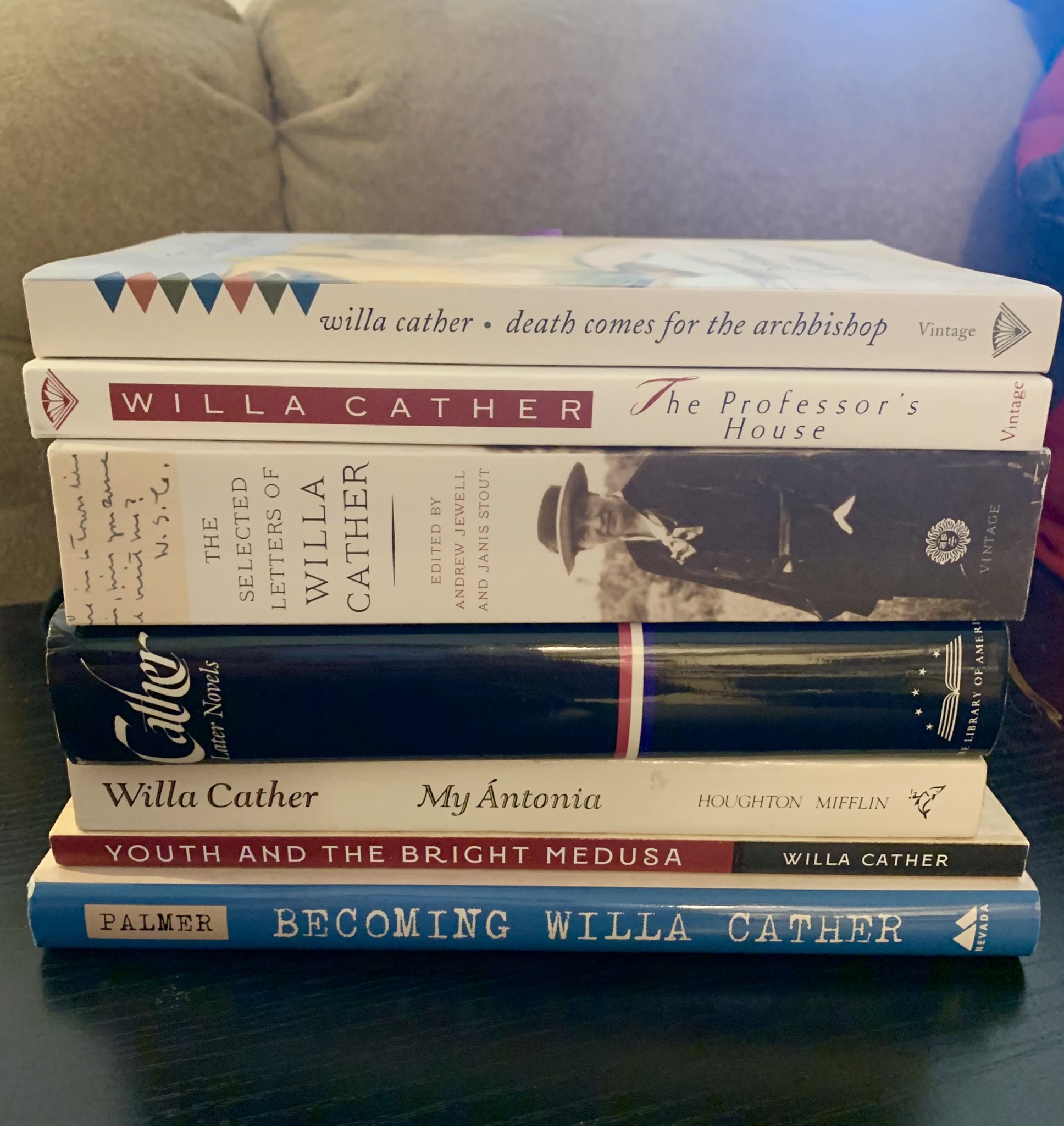
Last week, I virtually attended the annual National Willa Cather Center conference. Last year, the conference went all online because of pandemic. Presenters recorded their talks, followed by live Q&A on Zoom. This year, the Center was able to hold some in-person events. However, most panels were again presented virtually.
Willa Cather was an American author, best known for My Antonia, Death Comes For the Archbishop, and her Pulitzer Prize winning novel, One Of Ours. Cather’s formative childhood years in Red Cloud, Nebraska influenced her stories and characters. The Cather Center was established to preserve her work and encourage appreciation of the humanities.
Willa Cather’s Life In Magazines

This year’s conference centered on how Cather and her contemporaries utilized emerging print media to influence popular opinion. New developments in printing and photographic reproduction in the late 1800s and early 1900s allowed periodicals to be more widely distributed. As a result, the growing middle-class had greater access to news, politics, science, and the arts. Additionally, artists and businesses had more opportunities to influence popular opinion through stories and advertisements.
For Cather, newspapers and magazines served as both a launching point and, later, as a platform for her creative work. After attending college at the University of Nebraska, Cather worked as a journalist and critic in Pittsburgh and New York. Eventually, she became the editor for McClure’s magazine, one of the most widely distributed mass market periodicals of the time.
While the conference is largely academic, there were a variety of other topics. Presenters included college professors and literature studies students, an artist currently displaying paintings in the center’s gallery, and high school students who received scholarships sponsored by the Cather Center. Radhika Jones, the editor-in-chief at Vanity Fair, served as the conference’s keynote speaker, discussing the history of magazine publishing and Cather’s role as an editor and contributor.

New Discoveries
I hope to attend a Cather conference in person someday. But these virtual sessions allowed me to learn new things both about Cather and the history and culture in which she lived. This year, I discovered some short stories I wasn’t familiar with and some new insights into her personal life. Beyond that, however, I was especially intrigued by the connections between the presentations and modern examples of mass media’s influence on popular opinion and culture.
In Cather’s day, the emerging middle class wanted to explore things that had previously been limited to the wealthy, things like science and new inventions, political commentary, and the arts. Mass market periodicals provided artists, authors, and advertisers with a way to influence readers’ opinions on both news and culture.

Today, this same idea remains. We have celebrity news channels, social media influencers, and now, even livestreamed concerts. Modern technology provides more outlets for sharing content. Bur for Cather, newspapers and magazines provided the opportunity to share her work on a greater scale than ever before.
Similarly, Cather understood the concept known today as branding. She employed different strategies for different pieces. While some of her short stories and critiques appeared in more mainstream periodicals, she also placed stories in lesser-known magazines. These magazines had a readership that was open to stories that pushed the boundaries on taboo subjects. Others had a more regional audience where Cather could place stories that had similar settings and themes.
Marketing Cather to the Masses
In some of her personal letters, Cather lamented placing her work in mass media periodicals. She wanted to be taken seriously as an author. And even with working at some of these publications, she wanted readers to appreciate her work for its literary style. By placing stories in these periodicals, however, Cather understood marketing her work. If readers enjoyed a story or serial episode published in a magazine, they were more likely to buy one of her novels.
This understanding allowed Cather to develop a strategic approach to placing stories in magazines. While much of her work could appeal to a general audience, she knew some pieces required a different approach. She could place those stories in regional or thematic magazines. Today, we can equate this to targeted digital advertising. The dreaded algorithms of social media platforms drive targeted advertisements based on our likes and viewed articles. Cather knew how to play this game even in the early 1900s.
Some Things Never Change

The technology has progressed, but the basic concepts of branding, marketing, and influencing opinions haven’t changed in 100 years. Willa Cather and her fellow writers, musicians, and artists understood the power of print media. They could spread their work to the masses in targeted doses.
Today, those hoping to drive sales and/or influence opinions utilize everything from social media to video courses to live events. But the goal remains the same. The internet allows artists and influences to share content globally just as newspapers and magazines did in Cather’s day.
Final Thoughts
While the technology has changed, the goal of artists and businessmen alike has always been to reach a bigger audience. Whether they wanted to sell books, tickets to a concert, or a new refrigerator, mass media has been a powerful tool to market both products and ideas. Newspapers and magazines around the turn of the 20th century gave authors like Willa Cather another outlet to reach new readers. Even though she wanted to be viewed as a serious writer, she understood the need to market her work to different audiences.
Modern businesses of all kinds, along with artists and entrepreneurs, turn to digital marketing, video, and social media to grow and influence their audiences. While the magazines might be digital downloads now, and the black and white line drawings are now computer drafted videos, the goal is still the same. While Cather probably wouldn’t have embraced the technology of today, I do feel she would have learned how to use it to her advantage.
Reignite your creativity!

Subscribe to get new content, monthly newsletter, and important updates. You'll also receive a free download - "30 Days of Creative Inspiration."

